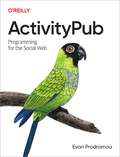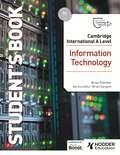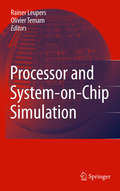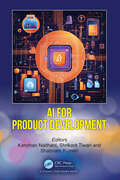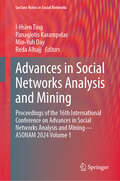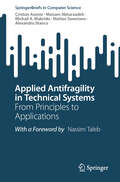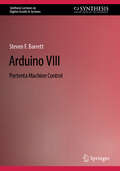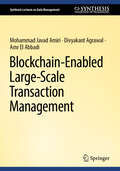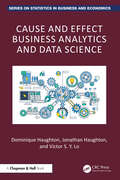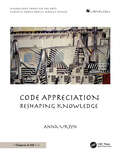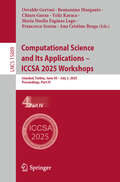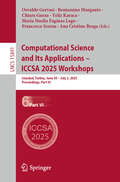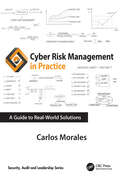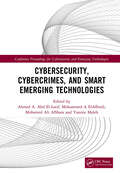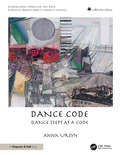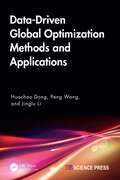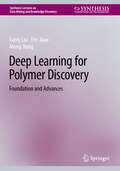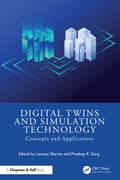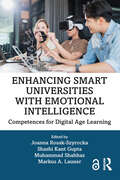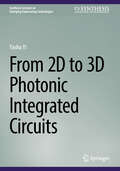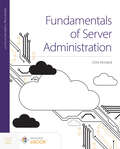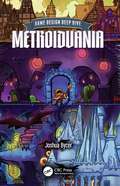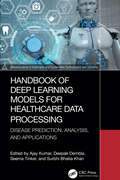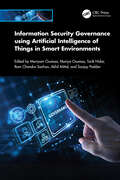- Table View
- List View
ActivityPub: Programming for the Social Web
by Evan ProdromouActivityPub is the new standard for connecting social networks together on the social web. This open, decentralized social networking protocol defines an API for sharing activities to a social network and a procedure that servers use to distribute those activities to a subscriber's feed. With this book, you'll learn how to assemble ActivityPub-enabled clients for making new kinds of social apps on top of existing networks and build ActivityPub servers that create new human or automated accounts on the social web.With those skills under your belt, you can explore other applications of this publish-subscribe technology: content management systems, internet of things, and enterprise automation. With hands-on examples and in-depth knowledge from Evan Prodromou, one of the authors of the protocol, this is the ActivityPub handbook that every social software hacker needs.Learn what the social web is and what ActivityPub doesRepresent social network data in the Activity Streams 2.0 formatWrite a simple ActivityPub client and serverExtend ActivityPub's functionality with new typesFind in-depth details about the more obscure ActivityPub data structuresEvan Prodromou is a coauthor of the ActivityPub protocol and the Activity Streams 2.0 data format.
Cambridge International A Level Information Technology
by Brian GillinderWe are working with Cambridge Assessment International Education to gain endorsement for this title.Develop theoretical and practical IT skills with this comprehensive Student's Book written by experienced authors and examiners specially for the updated Cambridge International Education A Level Information Technology syllabus (9626).- Improve understanding of concepts and terminology with clear explanations, labelled illustrations, photographs, diagrams, plus a glossary of key terms- Develop theoretical and practical skills with a range of exercises (multi choice through to discussion type questions), exam-style questions, step-by-step instructions and example answers that all ensure skills are developed alongside knowledge- Follow a structured route through the course with in-depth coverage of the full syllabusAlso available in the series:Cambridge International AS Level Information Technology Student's Book 9781510483057 Cambridge International AS Level Information Technology Student eTextbook 9781510484429 Cambridge International AS Level Information Technology Whiteboard eTextbook 9781510484436Cambridge International AS Level Information Technology Skills Workbook 9781510483064Cambridge International A Level Information Technology Student eTextbook 9781398307018Cambridge International A Level Information Technology Whiteboard eTextbook 9781398307025Cambridge International A Level Information Technology Skills Workbook 9781398309029Cambridge International AS & A Level Information Technology Online Teacher's guide - coming soon
Processor and System-on-Chip Simulation
by Rainer Leupers Olivier TemamSimulation of computer architectures has made rapid progress recently. The primary application areas are hardware/software performance estimation and optimization as well as functional and timing verification. Recent, innovative technologies such as retargetable simulator generation, dynamic binary translation, or sampling simulation have enabled widespread use of processor and system-on-chip (SoC) simulation tools in the semiconductor and embedded system industries. Simultaneously, processor and SoC simulation is still a very active research area, e.g. what amounts to higher simulation speed, flexibility, and accuracy/speed trade-offs. This book presents and discusses the principle technologies and state-of-the-art in high-level hardware architecture simulation, both at the processor and the system-on-chip level.
AI for Product Development
by Shrikant Tiwari Kanchan Naithani Shabnam KumariAI for Product Development explores the transformative role of artificial intelligence in reshaping modern industries. This book offers a comprehensive guide, spanning the evolution of AI in product innovation to practical applications, such as clustering techniques, human-autonomous vehicle interactions, and personalized healthcare solutions. With contributions from leading researchers, it covers explainable AI, real-world case studies, and ethical considerations in intelligent systems. The chapters delve into cutting-edge topics such as YOLO model variants, AI-driven emotion detection, and strategies for overcoming AI implementation challenges. Designed for researchers, professionals, and students, it bridges theory and practice, emphasizing AI's profound impact on product development and beyond.
Advances in Social Networks Analysis and Mining: Proceedings of the 16th International Conference on Advances in Social Networks Analysis and Mining - ASONAM 2024 Volume 1 (Lecture Notes in Social Networks)
by I-Hsien Ting Panagiotis Karampelas Reda Alhajj Min-Yuh DayThis book explores the evolution of social network analysis and mining (SNAM), a field that originated in social and business communities but has expanded significantly in recent years. The rise of online social platforms, email logs, phone records, and instant messaging systems has driven the development of advanced techniques for analyzing social networks, drawing heavily on graph theory and machine learning. As the Web increasingly becomes a social medium, it fosters human interaction, the sharing of experiences and knowledge, and the formation and evolution of communities. This transformation has amplified the importance of SNAM in fields such as academia, politics, homeland security, and business, where understanding the complex relationships between networked actors is crucial. This volume presents a comprehensive collection of cutting-edge research and developments in SNAM, offering a valuable resource for researchers and practitioners seeking to deepen their understanding of social networks and their applications.
Applied Antifragility in Technical Systems: From Principles to Applications (SpringerBriefs in Computer Science)
by Matteo Saveriano Cristian Axenie Meisam Akbarzadeh Michail A. Makridis Alexandru StancuThe book purpose is to build a foundational knowledge base by applying antifragile system design, analysis, and development in technical systems, with a focus on traffic engineering, robotics, and control engineering. The authors are interested in formalizing principles and an apparatus that turns the basic concept of antifragility into a tool for designing and building closed-loop technical systems that behave beyond robust in the face of uncertainty. As coined in the book of Nassim Taleb, antifragility is a property of a system to gain from uncertainty, randomness, and volatility, opposite to what fragility would incur. An antifragile system’s response to external perturbations is beyond robust, such that small stressors can strengthen the future response of the system by adding a strong anticipation component. The work of the Applied Antifragility Group in traffic control and robotics, led by the authors, provides a good overview on the current research status.
Arduino VIII: Portenta Machine Control (Synthesis Lectures on Digital Circuits & Systems)
by Steven F. BarrettThis book is about the Arduino microcontroller and the Arduino concept. The visionary Arduino represented a new innovation in microcontroller hardware in 2005, the concept of open source hardware, making a broad range of computing accessible for all. This book, &“Arduino VIII: Portenta Machine Control,&” is an accessible primer on industrial control and programmable logic controller concepts for those without a deep instrumentation background. An understanding of basic circuit theory is an appropriate prerequisite for the book. The three main goals for the book are: explore accessible Arduino Portenta Machine Control industrial control products; learn the fundamentals of programming using ladder logic; and explore related sensors and interface concepts. We use multiple examples throughout the book and conclude with an instrumented greenhouse project.
Blockchain-Enabled Large-Scale Transaction Management (Synthesis Lectures on Data Management)
by Divyakant Agrawal Amr El Abbadi Mohammad Javad AmiriThis book offers a thorough overview of permissioned blockchain systems, emphasizing how they can tackle key challenges in large-scale transaction management systems. Modern transaction systems operate in untrustworthy environments where numerous distrustful entities interact while maintaining data on untrusted infrastructure. By relying on Byzantine fault-tolerant protocols, permissioned blockchain systems have enabled a large class of distributed applications. The presentation focuses on four critical requirements: performance, scalability, confidentiality, and verifiability, which are crucial for effective blockchain operations. Throughout the book, various techniques are explored to address these requirements. The goal is to enhance understanding of the fundamental issues in transaction processing and present techniques that facilitate efficient large-scale transaction management system development in untrusted environments. The practicality of these techniques is highlighted through real-world applications.
Cause and Effect Business Analytics and Data Science (Chapman and Hall/CRC Series on Statistics in Business and Economics)
by Jonathan Haughton Dominique Haughton Victor S. LoAmong the most important questions that businesses ask are some very simple ones: If I decide to do something, will it work? And if so, how large are the effects? To answer these predictive questions, and later base decisions on them, we need to establish causal relationships.Establishing and measuring causality can be difficult. This book explains the most useful techniques for discerning causality and illustrates the principles with numerous examples from business. It discusses randomized experiments (aka A/B testing) and techniques such as propensity score matching, synthetic controls, double differences, and instrumental variables. There is a chapter on the powerful AI approach of Directed Acyclic Graphs (aka Bayesian Networks), another on structural equation models, and one on time-series techniques, including Granger causality.At the heart of the book are four chapters on uplift modeling, where the goal is to help firms determine how best to deploy their resources for marketing or other interventions. We start by modeling uplift, discuss the test-and-learn process, and provide an overview of the prescriptive analytics of uplift.The book is written in an accessible style and will be of interest to data analysts and strategists in business, to students and instructors of business and analytics who have a solid foundation in statistics, and to data scientists who recognize the need to take seriously the need for causality as an essential input into effective decision-making.
Code Appreciation: Reshaping Knowledge
by Anna UrsynLike art appreciation and music appreciation, this code appreciation book invites the readers to look relaxedly into major programming concepts used in many disciplines through short stories set in alphabetical order. Some students fear technology with programming behind it, and shy away from the word "coding." Coding has become common and needed, and these stories are set to help non-coders lose their inhibition. It also might help with prompt writing. Many employers seek employees with experience in visual communication, technology, and storytelling skills. Most tasks are created through group efforts, so a better grasp of what other co-workers are doing speeds up the process.The book offers a new approach to storytelling by weaving coding into stories. Playfully, it encourages the readers to see computing as easier to understand and present in most disciplines. The book might benefit high school and middle school students, faculty, advisors, chancellors, and those seeking majors or passions. People interested in computer graphics, arts, graphic design, computer science, and others may gain a general understanding of how technology affects various disciplines and how everything is connected.This book is a part of the “Knowledge Through the Arts” series, consisting of:Dance Code — Dance Steps as a CodeNew Storytelling — Learning Through MetaphorsCode Appreciation — Reshaping KnowledgeNature Appreciation — Knowledge as Art
Computational Science and Its Applications – ICCSA 2025 Workshops: Istanbul, Turkey, June 30 – July 3, 2025, Proceedings, Part IV (Lecture Notes in Computer Science #15889)
by Osvaldo Gervasi Beniamino Murgante Chiara Garau Yeliz Karaca Francesco Scorza Ana Cristina Braga Maria Noelia Faginas LagoThe fourteen-volume set LNCS 15886-15899 constitutes the papers of several workshops which were held in conjunction with the 25th International Conference on Computational Science and Its Applications, ICCSA 2025, held in Istanbul, Turkey, during June 30–July 3, 2025. The 362 full papers, 37 short papers and 2 PHD showcase included in this book were carefully reviewed and selected from 1043 submissions. In addition, the conference consisted of 58 workshops, focusing on very topical issues of importance to science, technology and society: from new mathematical approaches for solving complex computational systems, to information and knowledge in the Internet of Things, new statistical and optimization methods, several Artificial Intelligence approaches, sustainability issues, smart cities and related technologies.
Computational Science and Its Applications – ICCSA 2025 Workshops: Istanbul, Turkey, June 30 – July 3, 2025, Proceedings, Part IX (Lecture Notes in Computer Science #15894)
by Osvaldo Gervasi Beniamino Murgante Chiara Garau Yeliz Karaca Francesco Scorza Ana Cristina Braga Maria Noelia Faginas LagoThe fourteen-volume set LNCS 15886-15899 constitutes the papers of several workshops which were held in conjunction with the 25th International Conference on Computational Science and Its Applications, ICCSA 2025, held in Istanbul, Turkey, during June 30–July 3, 2025. The 362 full papers, 37 short papers and 2 PHD showcase included in this book were carefully reviewed and selected from 1043 submissions. In addition, the conference consisted of 58 workshops, focusing on very topical issues of importance to science, technology and society: from new mathematical approaches for solving complex computational systems, to information and knowledge in the Internet of Things, new statistical and optimization methods, several Artificial Intelligence approaches, sustainability issues, smart cities and related technologies.
Computational Science and Its Applications – ICCSA 2025 Workshops: Istanbul, Turkey, June 30 – July 3, 2025, Proceedings, Part VI (Lecture Notes in Computer Science #15891)
by Osvaldo Gervasi Beniamino Murgante Chiara Garau Yeliz Karaca Francesco Scorza Ana Cristina Braga Maria Noelia Faginas LagoThe fourteen-volume set LNCS 15886-15899 constitutes the papers of several workshops which were held in conjunction with the 25th International Conference on Computational Science and Its Applications, ICCSA 2025, held in Istanbul, Turkey, during June 30–July 3, 2025. The 362 full papers, 37 short papers and 2 PHD showcase included in this book were carefully reviewed and selected from 1043 submissions. In addition, the conference consisted of 58 workshops, focusing on very topical issues of importance to science, technology and society: from new mathematical approaches for solving complex computational systems, to information and knowledge in the Internet of Things, new statistical and optimization methods, several Artificial Intelligence approaches, sustainability issues, smart cities and related technologies.
Cyber Risk Management in Practice: A Guide to Real-World Solutions (Security, Audit and Leadership Series)
by Carlos MoralesCyber Risk Management in Practice: A Guide to Real-World Solutions is your companion in the ever-changing landscape of cybersecurity. Whether you're expanding your knowledge or looking to sharpen your existing skills, this book demystifies the complexities of cyber risk management, offering clear, actionable strategies to enhance your organization's security posture. With a focus on real-world solutions, this guide balances practical application with foundational knowledge.Key Features: Foundational Insights: Explore fundamental concepts, frameworks, and required skills that form the backbone of a strong and pragmatic cyber risk management program tailored to your organization’s unique needs. It covers everything from basic principles and threat modeling to developing a security-first culture that drives change within your organization. You’ll also learn how to align cybersecurity practices with business objectives to ensure a solid approach to risk management. Practical Application: Follow a hands-on step-by-step implementation guide through the complete cyber risk management cycle, from business context analysis to developing and implementing effective treatment strategies. This book includes templates, checklists, and practical advice to execute your cyber risk management implementation, making complex processes manageable and straightforward. Real-world scenarios illustrate common pitfalls and effective solutions. Advanced Strategies: Go beyond the basics to achieve cyber resilience. Explore topics like third-party risk management, integrating cybersecurity with business continuity, and managing the risks of emerging technologies like AI and quantum computing. Learn how to build a proactive defense strategy that evolves with emerging threats and keeps your organization secure. “Cyber Risk Management in Practice: A Guide to Real-World Solutions by Carlos Morales serves as a beacon for professionals involved not only in IT or cybersecurity but across executive and operational roles within organizations. This book is an invaluable resource that I highly recommend for its practical insights and clear guidance” – José Antonio Fernández Carbajal. Executive Chairman and CEO of FEMSA
Cybersecurity, Cybercrimes, and Smart Emerging Technologies: Proceedings of the Second International Conference on Cybersecurity, Cybercrimes, and Smart Emerging Technologies (CCSET 2023), Riyadh, Saudi Arabia, 5th–7th December, 2023 (Conference Proceedings for Cybersecurity and Emerging Technologies)
by Yassine Maleh Abd El-Latif, Ahmed A. Mohammed A ElAffendi Mohamed Ali AlSharaThis book presents cutting-edge research and advancements in the rapidly evolving fields of cybersecurity, cybercrimes, and smart emerging technologies. It serves as a comprehensive reference guide for the latest trends and challenges in securing our digital world.It highlights critical themes such as the application of AI and machine learning in threat detection and automation, the security implications of blockchain and distributed ledger technologies, safeguarding critical infrastructure and the IoT, addressing data privacy and governance, and advancing malware analysis and detection techniques. It also delves into technological breakthroughs in deep learning for fake account detection, blockchain for secure data exchange, DDoS mitigation strategies, and novel approaches to malware analysis. These findings provide valuable insights into current and emerging cyber threats and effective countermeasures.This book is an essential resource for researchers, cybersecurity professionals, policymakers, and anyone seeking to understand the complex landscape of cybersecurity in the digital age.
Dance Code: Dance Steps As A Code
by Anna UrsynMany people relax when coding is introduced as a language, rather than math. Even if someone creates alone, the technology involved in the process has already been developed by somebody else. Even one person's business requires professional input from others, and collaborations are often performed online. This book mixes experiences in art, coding, music, dance, choreography, video, and stage design. Dances have unique structures and so do computer codes. In both disciplines, steps are applied following patterns, and are guided by rules and restrictions. The rules obey conditions. The Dance Code script aims to make coding less feared by readers when talking with coders on the job and typing better prompts when using artificial intelligence. In this book, a dramatized, choreographed story unfolds technical information about coding and dancing.The Dance Code script tells the story of an online interaction between a coder and a prima ballerina, resulting in a shared understanding of their respective fields. An exchange between a coder and a dancer may inspire new ways to look at visually presenting knowledge through dancing, performing, or choreographed movement. Hence, the audience learns without studying.It is a part of the “Knowledge Through the Arts” series, consisting of:Dance Code - Dance Steps as a CodeNew Storytelling - Learning Through MetaphorsCode Appreciation - Reshaping KnowledgeNature Appreciation - Knowledge as Art
Data-Driven Global Optimization Methods and Applications
by Peng Wang Huachao Dong Jinglu LiThis book presents recent advances in data-driven global optimization methods, combining theoretical foundations with real-world applications to address complex engineering optimization challenges.The book begins with an overview of the state of the art, key technologies and standard benchmark problems in the field. It then delves into several innovative approaches: space reduction-based, hybrid surrogate model-based and multi-surrogate model-based global optimization, followed by surrogate-assisted constrained global optimization, discrete global optimization and high-dimensional global optimization. These methods represent a variety of optimization techniques that excel in both optimization capability and efficiency, making them ideal choices for complex engineering optimization problems. Through benchmark test problems and real-world engineering applications, the book illustrates the practical implementation of these methods, linking established theories with cutting-edge research in industrial and engineering optimization.Both a professional book and an academic reference, this title will provide valuable insights for researchers, students, engineers and practitioners in a variety of fields, including optimization methods and algorithms, engineering design and manufacturing and artificial intelligence and machine learning.
Deep Learning for Polymer Discovery: Foundation and Advances (Synthesis Lectures on Data Mining and Knowledge Discovery)
by Gang Liu Meng Jiang Eric InaeThis book presents a comprehensive range of topics in deep learning for polymer discovery, from fundamental concepts to advanced methodologies. These topics are crucial as they address critical challenges in polymer science and engineering. With a growing demand for new materials with specific properties, traditional experimental methods for polymer discovery are becoming increasingly time-consuming and costly. Deep learning offers a promising solution by enabling rapid screening of potential polymers and accelerating the design process. The authors begin with essential knowledge on polymer data representations and neural network architectures, then progress to deep learning frameworks for property prediction and inverse polymer design. The book then explores both sequence-based and graph-based approaches, covering various neural network types including LSTMs, GRUs, GCNs, and GINs. Advanced topics include interpretable graph deep learning with environment-based augmentation, semi-supervised techniques for addressing label imbalance, and data-centric transfer learning using diffusion models. The book aims to solve key problems in polymer discovery, including accurate property prediction, efficient design of polymers with desired characteristics, model interpretability, handling imbalanced and limited labeled data, and leveraging unlabeled data to improve prediction accuracy.
Digital Twins and Simulation Technology: Concepts and Applications
by Lavanya Sharma and Pradeep K. GargThis book provides a comprehensive overview of the concept of digital twins, emphasising its strategic importance across various commercial domains. This book covers the fundamentals, data requirements, tools, and technologies essential for understanding and implementing digital twins. It discusses how digital twins are used for running simulations, analysing performance issues, and generating potential improvements to optimise business processes. The book explores the architecture, historical background, and real-time applications in sectors including urban planning, healthcare, smart cities, and manufacturing. Explains digital twin technology, including its core principles, architecture, and how it replicates physical objects in virtual platforms, in detail Covers the data types and tools necessary for creating and maintaining digital twins, including sensors, data processing systems, and integration methodologies Explores technologies such as Computer Vision, IoT, AI, ML, 5G, AR, and VR that drive the functionality and application of digital twins Analyses practical applications in diverse sectors like urban planning, smart cities, healthcare, manufacturing operations, and power-generation equipment, showcasing real-world use cases and benefits Examines real-time challenges and limitations associated with implementing digital twin technology, providing a balanced view of its capabilities and constraints It is a reference book for researchers, scholars, and students who are working or interested in learning about digital twin technology.
Enhancing Smart Universities with Emotional Intelligence: Competences for Digital Age Learning
by Markus A. Launer Muhammad Shahbaz Shashi Kant GuptaEnhancing Smart Universities with Emotional Intelligence investigates the successful blending of technology innovations and human beings’ emotional intelligence within higher education institutions in the midst of digital transformation. Today’s “smart” universities improve student experiences, expedite administrative procedures, and facilitate individualized learning pathways by integrating a variety of cutting-edge technologies such as machine learning, big data analytics, immersive and wearable learning tools, digital management systems, and cloud computing. But how can leaders and administrators ensure that these advancements don’t come at the expense of positive experiences and relationships among students and faculty? Built from theoretical frameworks, case studies, and empirical research, this book offers a thorough manual for comprehending the crucial nexus of technology and human abilities to enable dynamic and sustainable learning environments. Each chapter is essential for college and university leaders, administrators, and policymakers around the world who are charged with ensuring that human talents and digital technologies are properly balanced for the best possible learning experiences.Chapter 1 of this book is freely available as a downloadable Open Access PDF at http://www.taylorfrancis.com under a Creative Commons Attribution-Non Commercial-No Derivatives (CC BY-NC-ND) 4.0 license.
From 2D to 3D Photonic Integrated Circuits (Synthesis Lectures on Emerging Engineering Technologies)
by Yasha YiThe integration of photonics and electronics has transformed the landscape of modern technology. At the forefront of this revolution is the development of Photonic Integrated Circuits (PICs). Historically rooted in the traditional 2-D fabrication processes inherited from electronic Integrated Circuits, PICs shifted to 3-D configurations, introducing new design philosophies that impact scalability, efficiency, and performance. This convergence of electronic and photonic circuits presents unique challenges and great opportunities. This book provides an introduction to photonic integrated circuits and the transition from 2D to 3D PICs. It then describes design and fabrication techniques of 3D PICs and related challenges and solutions. Finally, applications of 3D photonics, emerging technologies and industry outlook are also discussed.
Fundamentals of Server Administration
by Chris KinnairdFundamentals of Server Administration equips students and professionals with the essential skills to manage both on-premise and cloud-based server environments, addressing the growing knowledge gap as organizations adopt platforms like Amazon AWS and Microsoft Azure while continuing to deploy and manage critical infrastructure on local servers. This comprehensive resource covers key topics and concepts for Windows and Linux server environments and includes graphical and console-based administration activities. It provides practical knowledge and supports industry-recognized credentials needed to succeed in today’s evolving IT landscape, aligning with the CompTIA Server+ (SK0-005) certification and the CompTIA Network Infrastructure Professional stackable certification for students who also obtain the Network+ certification.
Game Design Deep Dive: Metroidvania (Game Design Deep Dive)
by Joshua BycerGame Design Critic and expert Joshua Bycer is back with another entry in the Game Design Deep Dive series for a look at one of the most popular, and confusing, genres out there. Metroidvania is a genre of high‑highs and low‑lows, and Josh is taking up the task to explain what a metroidvania is, the very long history and variety of it, and what you need to do to create one yourself.• A look at the history of metroidvania design• A primer on 2D platforming UI/UX• Explaining the design and specific elements that make a metroidvania orcould be applied to other genres• Perfect for designers and students alike
Handbook of Deep Learning Models for Healthcare Data Processing: Disease Prediction, Analysis, and Applications (Advancements in Intelligent and Sustainable Technologies and Systems)
by Ajay Kumar Surbhi Bhatia Khan Deepak Dembla Seema TinkerIn recent years, deep learning has shown great potential in transforming various fields including healthcare. With the abundance of healthcare data being generated every day, there is a pressing need to develop efficient algorithms that can process and analyze this data to improve patient care and treatment outcomes.Handbook of Deep Learning Models for Healthcare Data Processing: Disease Prediction, Analysis, and Applications covers a wide range of deep learning models, techniques, and applications in healthcare data processing, analysis, and disease prediction, providing a comprehensive overview of the field. It focuses on the practical application of deep learning models in healthcare and offers step-by-step instructions for building and deploying models and using real-world examples. The handbook discusses the potential future applications of deep learning models in healthcare, such as precision medicine, personalized treatment, and clinical decision support. It also addresses the ethical considerations associated with the use of deep learning models in healthcare, such as privacy, security, and bias. It provides technical details on deep learning models, including their architecture, training methods, and optimization techniques, making it useful for data scientists and researchers.Written to be a comprehensive guide for healthcare professionals, researchers, and data analysts, this handbook is an essential need for those who are interested in using deep learning models to analyze and process healthcare data. It is also suitable for those who have a basic understanding of machine learning and want to learn more about the latest advancements in deep learning in healthcare.
Information Security Governance using Artificial Intelligence of Things in Smart Environments
by Mariya Ouaissa Mariyam Ouaissa Tarik Hidar Ram Chandra Sachan Akhil Mittal Sanjay PoddarThis book explores the integration of Artificial Intelligence (AI) with the Internet of Things (IoT) to address security challenges in smart environments. It delves into how AI enhances the governance of information security by automating processes, detecting threats, and ensuring the protection of data in interconnected IoT systems. It covers theoretical foundations, practical frameworks, and case studies, offering insights into securing smart cities, homes, industries, and healthcare systems. It also emphasizes governance models that leverage AI to manage security policies and risk in dynamic, data-driven ecosystems.This title focuses on the study and application of AI of Things in the field of information security governance. Intelligent environments, characterized by increasing connectivity of devices and systems, present unique challenges for information security. The use of AI of Things offers opportunities to enhance security in these complex environments.
